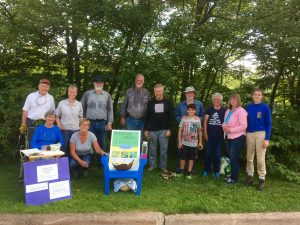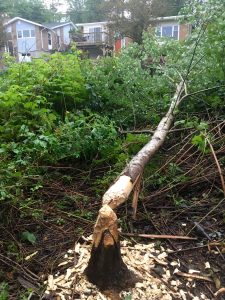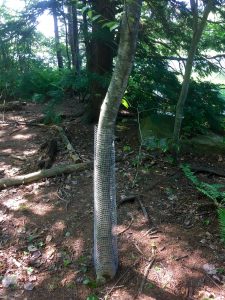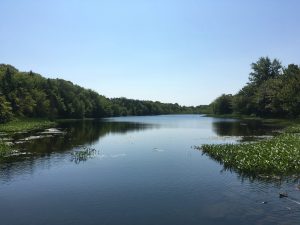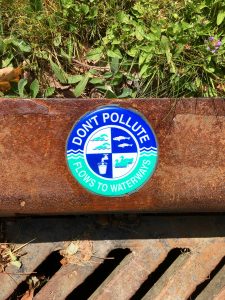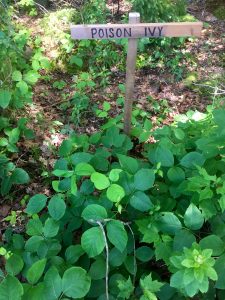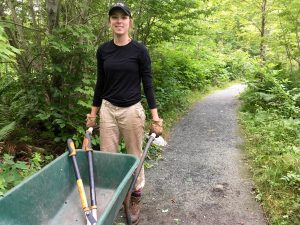The entry path from Oathill Crescent to the Oathill Lake trail needs more work. Those readers who walk the trail or fish in the lake will be aware of the significant alterations at the foot of that entry to the trail. The objective of that work was to divert the Oathill Crescent street runoff from its storm sewers, loaded as it often is with road salt and lawn fertilizer, to a settling pond beside the path where some of its contaminants could be absorbed by plant life there.
To accomplish this, OLCS, The Parks Department and Halifax Water collaborated on a plan to cut into the last leg of the storm sewer, install a catch pit and build the long narrow pond walkers have noticed, separated from the lake by a berm. That part of the plan is much as expected. After each rainstorm walkers will see that the pond has significant water in it that drains very slowly through the berm into the lake. OLCS members have planted some rushes in it, and plan for many more after some pea gravel is added in the bottom to better hold the plants. The reeds and cat tails will absorb lawn nutrients and minerals before they enter the lake and will be harvested periodically for disposal away from the lake.
An unforeseen consequence of this construction, however, is that the entry path no longer slopes gently to the lake’s edge but instead comes to an abrupt end at a barrier to prevent tumbles onto the riprap retaining the fill at the water’s edge. This change in topography makes it less attractive to swim from there and more annoyingly, to launch canoes and kayaks carried down on cart wheels from there without maneuvering them past rocks on the north side of the barrier. The reason for this topography is straight-forward; it takes significant force to absorb the momentum of the water rushing down the storm drain pipe and divert it to the pond, a force that could tip over the catch pit where the diversion to the pond happens. To prevent this, the original contractor used a large amount of rock backfill between the catch pit and the lake which the core group finds unacceptable because it blocks easy access to the lake.
Clearly, in the specifications for the original design, the preservation of easy lake access for swimming and boating was not sufficiently emphasized, so the as-built solution satisfies engineering and hydraulic requirements but not the lake entry point ease requirements. During rain events, the present construction also increases erosion by channeling surface runoff to narrow areas on each side of the structure. Our desired long-term objective is to have a clean, bio-remediated lake that is easy to get into for a swim or a paddle. As an example, one can look at the success of the stairs further along the trail.
Given those difficulties, the OLCS core group are considering this challenge as our winter’s work and putting the Lorne Avenue — Beckfoot Drive trail closure project on hold until the problem at Oathill entry point is properly solved.
The erosion along the side of the entry path and across the trail below, is forming a delta of gravel in the lake; not kind to bare feet. In addition, it was that overflow from the street that undermined the barrier at the foot of the path. The cause for this, it has been agreed, is that the street grate at the head of the path on Oathill Crescent gets clogged occasionally and may even be too small for the expected flows in heavy rain. Further, the curb between the road and the path should be higher so water in the street cannot overflow down the path. The City has plans to address those problems and to divert any water flowing down the path off to the sides.
What the core group would like to hear from lake users are suggestions from swimmers, trail walkers and boaters about what they would like to see done at the foot of the path. Readers are reminded, however, that solutions cannot include a dock or a raft and ramp because neither would be supervised during the summer so there are safety concerns and both solutions would have to be removed and stored for the winter months; a formidable task for a few volunteers. Further, no one wants a dock or raft to become a night-time party spot or a focus of contention among sunbathers, dog owners, and boaters all wanting access. We feel it is best to make entry from the trail to the lake easier. Comments welcome.
